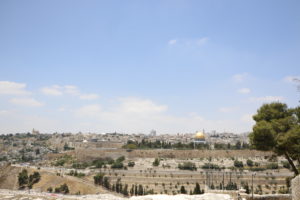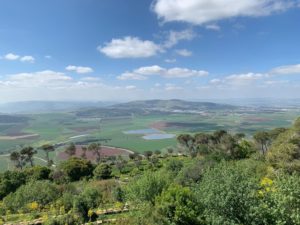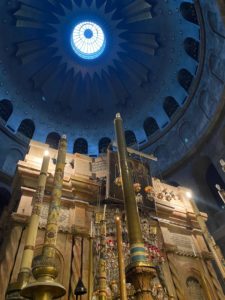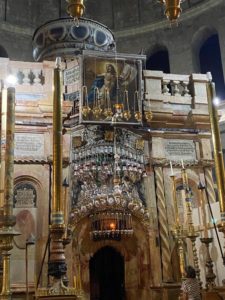Saint Jerome lived many years in Bethlehem, where he translated the Bible into Latin. To him, this land was a sort of “fifth Gospel,” because if each of the four Gospels provides us with additional insight about Jesus, getting to know the geography of the land where they take place brings the writings to life. The long distance between Galilee and the religious center at the Temple, the forty meters of depth at the well of Sychar, the eleven hundred meters of elevation one must overcome to walk from Jericho to the pinnacle of Jerusalem, the torrential winter rainfall around the mountains of Judea, the suffocating summer heat near the Lake of Gennesaret, two hundred meters below sea level, the tiredness derived from climbing Mount Tabor, the fortified walls that surround the old part of Jerusalem, the views from Gethsemane of the Eastern wall that supports the esplanade where the Temple was located, and a long list of brushstrokes that define the landscape and the climate of this territory, make for a different reading of the Gospels after one visits.

City of Jerusalem

Mount Tabor, in Lower Galilee
And not just the Gospels, but the entire Bible, beginning with the prophecies of the Old Testament that foretold of the Messiah and the way these came to be in Jesus’ life. How could David write Psalm 22 one thousand years before the Passion? It was certain to take place in the same city where he lived, but only God knew that at the time.
I like to go to the Cenacle on the evening of Holy Thursday, as, even though it is closed at that time, one can still access the rooftop; and afterwards go to Galicantu, which commemorates the cock crowing after Peter’s denials and which still has a cistern-like jail and a first-century stairwell that Our Lord must have stepped through twice on that night; and finally going to Gethsemane by a road from which one can see some mausoleums that already existed when Jesus walked by there. Reading a passage corresponding to that night when visiting each place and praying peacefully about them, helps to bring the events back to life.

Sea of Galilee
Friday and Saturday are completed with the Via Dolorosa which ends at the Basilica that encompasses Calvary and the Tomb where Jesus resurrected.
Living in the Holy Land is a privilege. But we should not wait to be in Capernaum, Nazareth, Bethlehem, or Jericho in order to establish our personal relationship with Jesus. “God is spirit, and those who worship Him must do so in spirit and truth” (Jn 4:24). We must take the Holy Land to our own home and live close to Him always, because He wants to be in our heart. Undoubtedly, however, a pilgrimage can help us to have a more personal encounter with Jesus: if the first evangelization began in Jerusalem, the new evangelization must also go through the holy city, and from there reach out everywhere into the world.
By Father Joaquín Paniello

Church of the Holy Sepulchre in the Old City Jerusalem

Church of the Holy Sepulchre in the Old City Jerusalem
